Recipe for success: How to boost QSR sales with OOH
Ben Baker (managing director, APAC at Vistar Media) shares key tactics for quick service restaurants (QSR) marketers who are looking to drive hungry customers in stores with digital out of home.
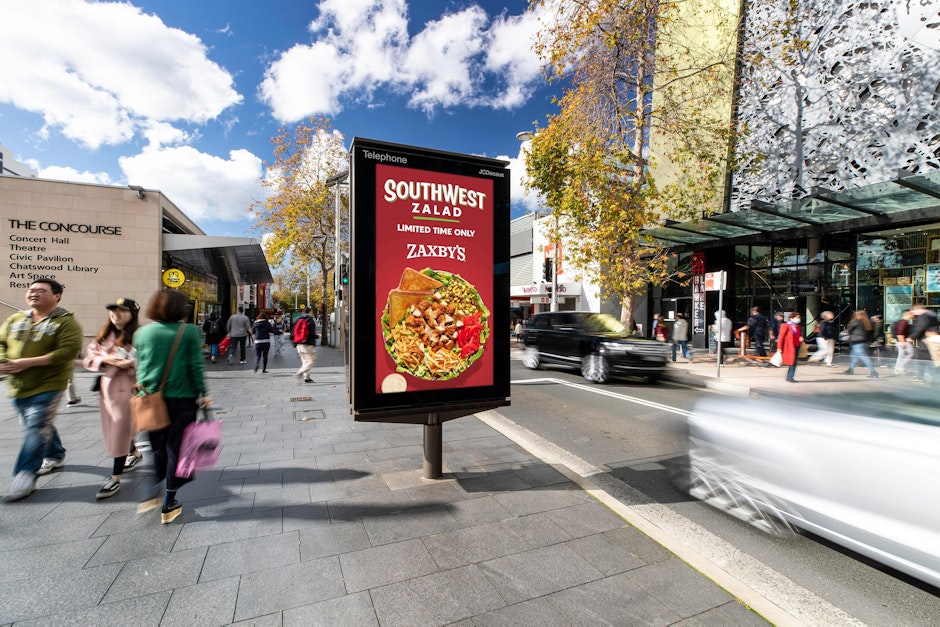
The quick service restaurant (QSR) sector is booming and more competitive than ever – with the industry’s global market size experiencing significant growth over the past decade. With more QSRs doubling down on menu innovations, global expansions and digital enhancements to meet the needs of today’s on-the-go consumer, it’s never been more important for these brands to leverage advertising strategies that are actually reaching the right audience, at the right moment and time, with just the right message.
Out of home (OOH) advertising is a natural complement to a brand’s QSR marketing strategy – it’s physical, outdoor media that surrounds people in their everyday lives. It’s captivating, not distracting, and personalized, not invasive. And most importantly, it has the power to reach the masses, while also reaching specific groups of people, such as fast-food lovers or busy families on the go, driving real-world outcomes.
For instance, according to research from The Harris Poll and OAAA, six in 10 recall seeing OOH QSR ads recently, and 67% of those who saw a QSR OOH ad made a purchase at a physical store. What’s more, programmatic digital out of home (DOOH) technology can play an important role for QSRs looking to make an impact further down the funnel. How? Here are four DOOH tactics that can help boost sales and drive success for QSR brands.
1. Audience targeting
Bring precision to your campaigns in the physical world. Programmatic audience targeting is a marketer’s best friend – allowing you to identify exactly who you want to reach, and deliver your message via DOOH placements precisely when your audience is most engaged. This approach also minimizes media waste, optimizing ROI in the process.
Some best practices include creating and targeting custom audiences based on first- and third-party data:
First-party data
With DOOH, advertisers can use their own first-party data to target their desired audiences to keep their QSR brand top of mind, promote special offers and encourage repeat purchases among existing customers. By using owned first-party data, QSR marketers can also build and target high-value audiences, such as loyalty rewards members, frequent diners and mobile app users.
Third-party data
People’s behavior indicates a lot about their interests, preferences and characteristics. Tapping into partnerships with leading third-party data providers, such as Foursquare, Epsilon and PlaceIQ, QSR brands can easily uncover insights into their target customers and activate audiences based on the places they visit, previous purchases, personal interests and more. Advertisers can then share tailored messaging on relevant DOOH screens to reach their intended customers, like:
- Fast food enthusiasts
- Delivery app users
- Food category buyers (pizza, burgers, breakfast, etc.)
- Competitive restaurant goers
- QSR cash consumers
- Coffee shop frequenters
- Sit down QSR customers
- Carry out food enthusiasts
Example: Learn how Jack in the Box utilized a Foursquare audience of diners who frequented competitive fast-casual restaurants to drive 1.3M+ restaurant visits with DOOH.
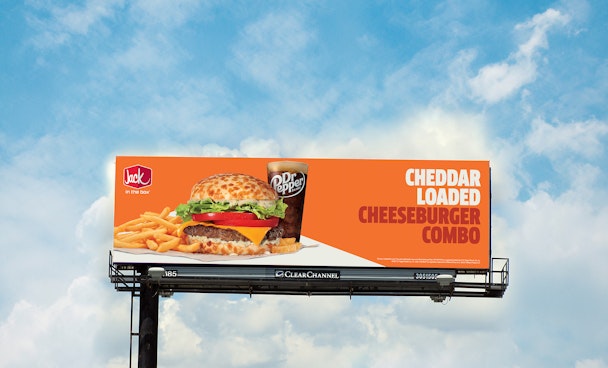
2. Dynamic creative
With dynamic creative, your ads can easily adapt to the place and the moment, changing messages and images based on data. From displaying nearest store locations across different markets to integrating live countdowns for regional product launches, dynamic creative brings new possibilities for QSR brands looking to personalize their campaigns. And the best part? You don't need to create countless ad variations or manage complicated campaign flighting.
Some example use cases QSR brands may want to consider leveraging:
- Nearest restaurant location – display directions to your nearest physical location to drive foot traffic into restaurants.
- Regional product promotions or limited-time offers – easily promote different offers, in different locations, with no manual work required.
- Countdowns to product launches or affiliated sports games – incorporate live countdowns to when your new product is hitting restaurants to drive awareness and excitement.
- Current weather conditions – hot, sunny day in Sydney? Highlight daily temperatures in your ad creative, encouraging customers to stop by for a cool, refreshing beverage when temperatures are highest.
Example: Retail coffeehouse Gloria Jean’s used dynamic creative to automatically display the nearest shop location in ads throughout Australia, directing its audience to the nearest stores for their caffeinated cravings.
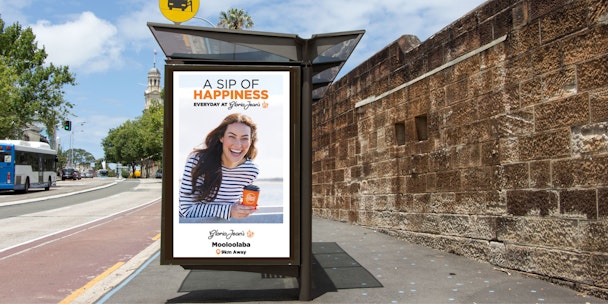
3. Proximity targeting
Just as QSR brands carefully plan out where their eateries will be located, advertisers must also be strategic about where they place their DOOH ads. With proximity targeting, or point of interest (POI) targeting, brands can deploy ads in the immediate vicinity of locations frequented by your target audience or at key moments in their experience. Imagine your brand's message strategically placed where your audience is most likely to react, whether that's near their office buildings, outside entertainment venues, or intercepting them en route to a competitor's location.
Some common use cases for QSR marketers could include setting a POI radius of their own restaurants, competitive locations, sporting arenas, convention centers, concert venues, amusement parks or any other relevant destination — allowing them to reach their audience at the perfect moment (i.e. when they’re considering their next meal).
Example: To reach consumers when they were close to Australian-based Mexican fast-food chain, Mad Mex, the QSR implemented POI targeting to activate DOOH media within 1km of select franchise locations, resulting in a 9% increase in sales.
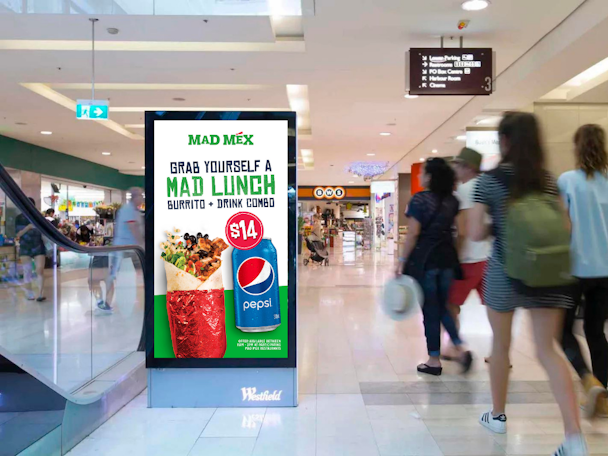
4. Measurement
Whether the goal of a campaign is awareness, consideration, online orders or restaurant visits, DOOH offers in-depth measurement solutions that help QSR marketers measure what matters most. With a precise view of the real impact of your campaign, you can turn insights into action for informed marketing decisions. Measurement studies that could be particularly useful for QSR marketers:
Brand study
Measure DOOH campaign exposure on awareness, favourability, consideration, message recall, competitive preference, visit intent and other top-to-mid-funnel metrics.
Online conversion
Available in the US, online conversion studies allow QSR brands to measure the effectiveness of their programmatic DOOH campaigns across a variety of online KPIs after campaign exposure, including insight into website traffic, online engagement, app downloads and more.
Foot traffic study
Foot traffic studies measure the lift in visits to specific brick-and-mortar locations (such as restaurants), based on campaign ad exposure. QSR brands can leverage foot traffic studies to understand the overall lift in foot traffic driven by their DOOH campaign.
Example: Church’s Texas Chicken conducted a foot traffic study to measure the incremental lift in store visitation driven by DOOH media, which found a 13% increase in foot traffic and 2.4 million restaurant visits as a result of exposure to the campaign.
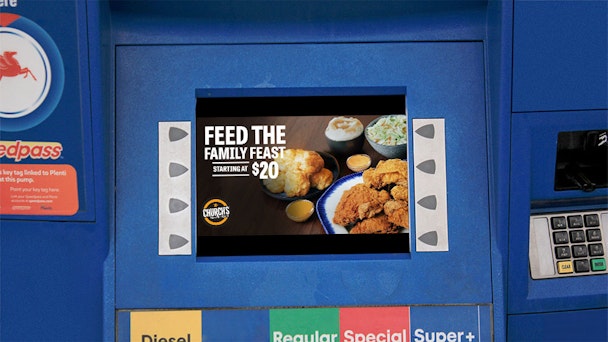
Food for thought
DOOH advertising is a clear winner for QSR brands regardless of where they operate globally, providing them with an effective, flexible and measurable way to reach and connect with hungry customers in the real world.
For your next campaign, consider programmatic DOOH and how you can harness the best of the channel. From drilling into exactly who you want to reach by using first- and third-party data, putting your creative first and integrating dynamic capabilities to make sure your ads actually resonate, using proximity targeting to catch customers at key moments, and finally, tapping into measurement solutions that will give you meaningful insights – OOH is guaranteed to drive hungry customers into your doors (and drive-throughs).

